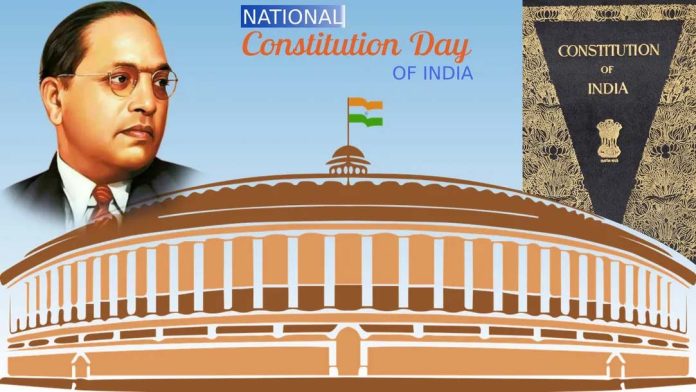Jitendra Singh
Seventy-five years ago, on November 26, the Constitution of India was adopted. The longest-written Constitution of any sovereign country in the world embodies the sacrifices, hopes, and ideals of a nation reborn. Two manuscripts, one in English and another in Hindi, meticulously crafted by Prem Behari Narain Raizada and brought to life with the artistry of Nandalal Bose, are more than ink and parchment papers. Its pages come alive with the imagery that journeys from the ancient marvels of Mohenjo Daro and the spiritual wisdom of the Vedic age to the indomitable spirit of India’s freedom movement. Every stroke of ink represents the promise of a democratic republic.
As we celebrate the 75th Samvidhan Diwas, we must also acknowledge the potential fragility of these nation’s treasures. Time, indifferent to sentiment, threatens even the most resilient creations, and the original calligraphed copies of the Constitution, bearing the signatures of its founding fathers, are no exception. While high-quality digital versions are readily available online, and countless transcripts exist in books and manuscripts, the two original copies remain invaluable treasures that must be preserved for posterity. This is where science plays a crucial role.
In the mid-1980s, the Council of Scientific and Industrial Research’s National Physical Laboratory (CSIR-NPL) stepped in to safeguard these legacies. Over the next few years, CSIR-NPL navigated through the challenging aspects of constructing safe receptacles that can preserve the original hand written manuscripts of the Constitution of India.
The display cases needed a hermetic seal with mechanical strength to withstand varying humidity, temperatures and oxygen level and the durability to endure the test of time. After years of meticulous effort, the CSIR-NPL, in collaboration with the Getty Conservation Institute (GCI), US, successfully installed the ‘hermetically sealed glass cases’ at the Parliament Library in 1994.
These hermetically sealed receptacles are designed to maintain a controlled micro-environment of less than 1% oxygen and humidified nitrogen with 40-50% relative humidity. The display cases, containing the English and Hindi versions of the Constitution of India, are placed in a vault-like climate-controlled room in the library of the Parliament of India. Each case is individually mounted on polished stainless-steel stands, enclosed in varnished teak cabinets that conceal the metal frames. The stands and cabinets were custom-built at CSIR-NPL. Furthermore, these receptacles are evaluated periodically by a team of NPL scientists, and the Parliament Library monitors them every week.
By preserving the Constitution of India for posterity, we honour the dreams of those who envisioned a free and democratic India and reaffirm our commitment to the values that continue to shape our nation today and forever.
(The author is Union Minister of State (independent charge) Ministry of Science & Technology, (independent charge) Ministry of Earth Sciences)
Trending Now
E-Paper


